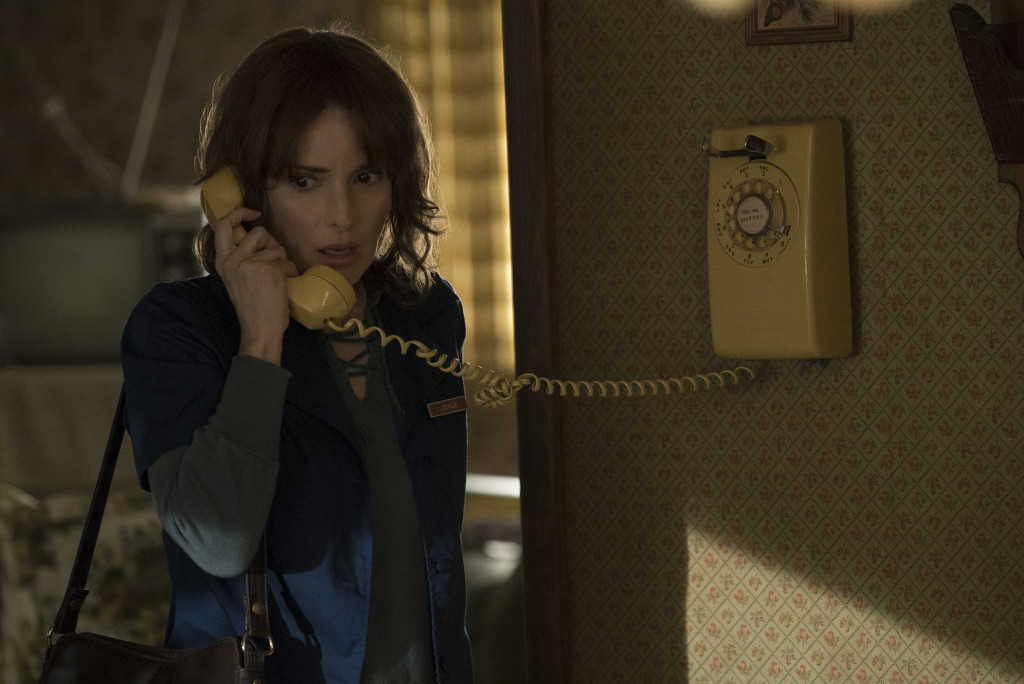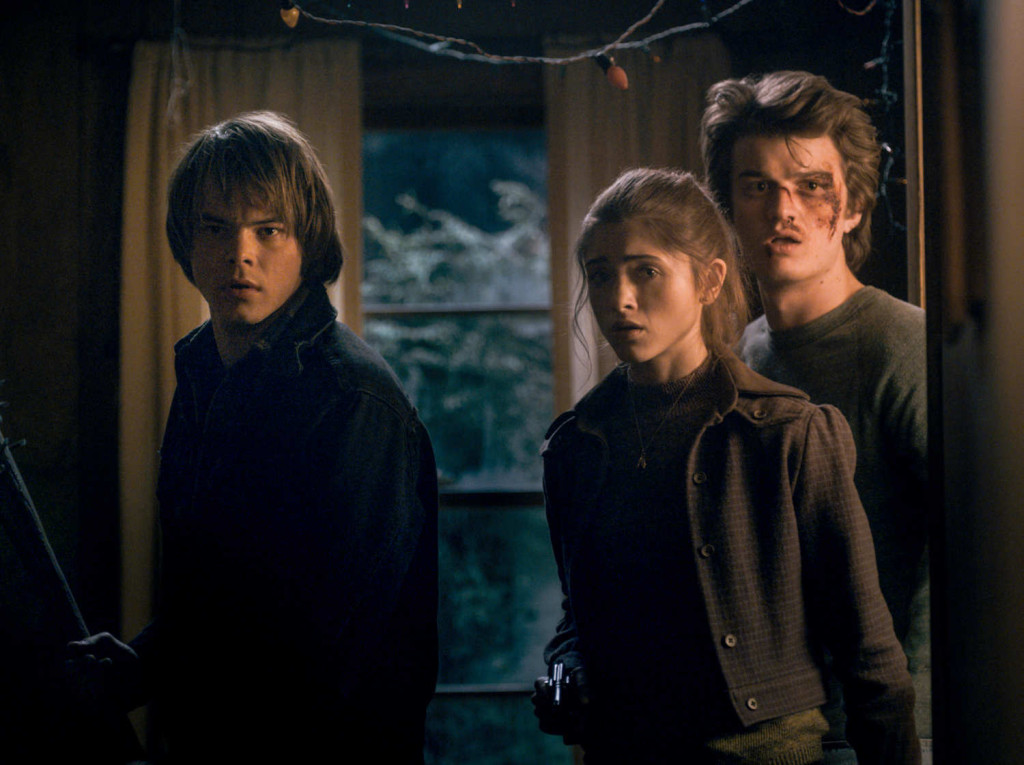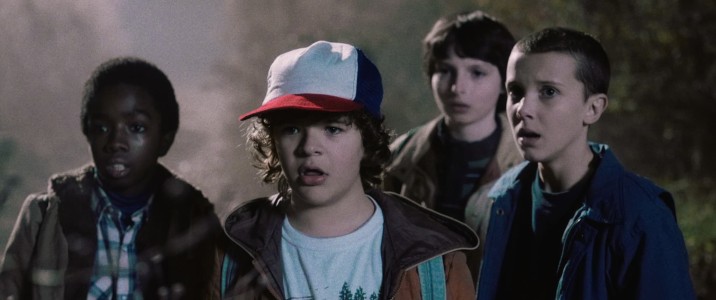If nostalgia is a boon to those who consider the past an infinitely less troubling time than the present, then it can also undermine the sadness and desperation that has always been prevalent since time immemorial. At its best, Netflix’s new series Stranger Things accomplishes both of these traits, presenting in its portrait of 1983 small-town America a composite of Steven Spielberg and John Carpenter movies that is undercut with middle-class malaise. The chief antagonists may be supernatural or bureaucratic in nature, but the most compelling source of conflict in Stranger Things is one between communion and conformity. Like another nostalgia-tinted portrait of the early 1980s from 2016, Richard Linklater’s Everbody Wants Some!!!, Stranger Things is at its most beguiling when attempting to distinguish the minute difference between unity and uniformity.
The catalyst for this cultural conflict lies, of course, in the disappearance of a boy from the town of Hawkins, Indiana. Very little of the nature of his disappearance is disclosed, though it is no major spoiler to say that it involves some monstrous creature that has escaped the confines of a gated facility nearby. The entire town is thrown into turmoil, including the boy’s mother (Winona Ryder, equally frazzled and ferocious) and brother (Charlie Heaton), his three closest friends (Finn Wolfhard, Gatten Matarazzo, and Caleb McLaughlin), and the hermetic sheriff (David Harbour). The boys, utilizing their vast prowess of fantasy tropes and not a little bit of pluck, search for their missing companion and inadvertently stumble upon a girl (Millie Bobby Brown) who may hold the key to this entire mystery. Needless to say that, without giving too much away, the perceptive viewer will be able to piece together a fairly cohesive picture of the puzzle slightly before the halfway mark of the eight-episode season.

Though a tremendous amount of time is invested in the gradual revelations of Will Byers’ whereabouts and the origins of the girl, Eleven (named accordingly for the sinister tattoo on her arm), the best moments of the series shine through interactions between characters. The eldest sister of one of the boys, Nancy (Natalia Dyer), has her own seemingly concurrent character arc which is subsumed into the main plot when her best friend also inexplicably vanishes. This eventually prompts her to collaborate with the older Byers brother, and while there are the requisite scenes of them either poring over possible clues or coming face to face with an assortment of nemeses, from the monster to a gang of impertinent teens, the best moment between the two concerns a conversation about their very selves. If not very elegant in its brusque prose, this exchange nevertheless cuts to the existential dilemma dwelling at the fringes of their collective psyche; how does one reject the promise of suburban complacency while not making the same mistakes as their parents? This inter-generational quandary between the Baby Boomers and their children growing in the New Morning of Reagan’s America provides a poignant layer to a show that threatens to veer into a mere sheen of superficiality.
If the series is guilty of indulging in the clichés and iconography of popular culture from the era in which it’s set without much subversion of said facets, the material is strengthened by several key players. Some of the townsfolk never transcend the requirements of the script, including two incompetent deputies cut from a cloth overly reminiscent of Andy Brennan from Twin Peaks. But actors like David Harbour and Millie Bobby Brown overcome their archetypes to find the wounded humanity of their characters, both in their fears and their yearnings. Even Joe Keery’s performance as Steve Harrington, the romantic rival of Jonathan Byers, imbues depth and charisma into a character that displays a perceptive acuity distinguishable from a purely lazy rehash of any sleazy bully in a high school movie from thirty years ago.

In the wake of a slew of retro horror media that has permeated the cultural landscape in recent years, Stranger Things is comfortably nestled between Super 8 and It Follows, both superior works that interrogated the concepts of filmmaking and sexuality, respectively, through a nostalgic lens. Stranger Things is attracted most to the power of myths and their efficacy in either compounding or concealing our deeper sources of mistrust, whether that be of our neighbors, our governments, or even ourselves. It is not yet a great series, but there is enough consideration of character, tone, and artifice that it has the potential should the Duffer Brothers continue peeling away the layers of their youth in relation to a contemporary America’s own fears and myths.
